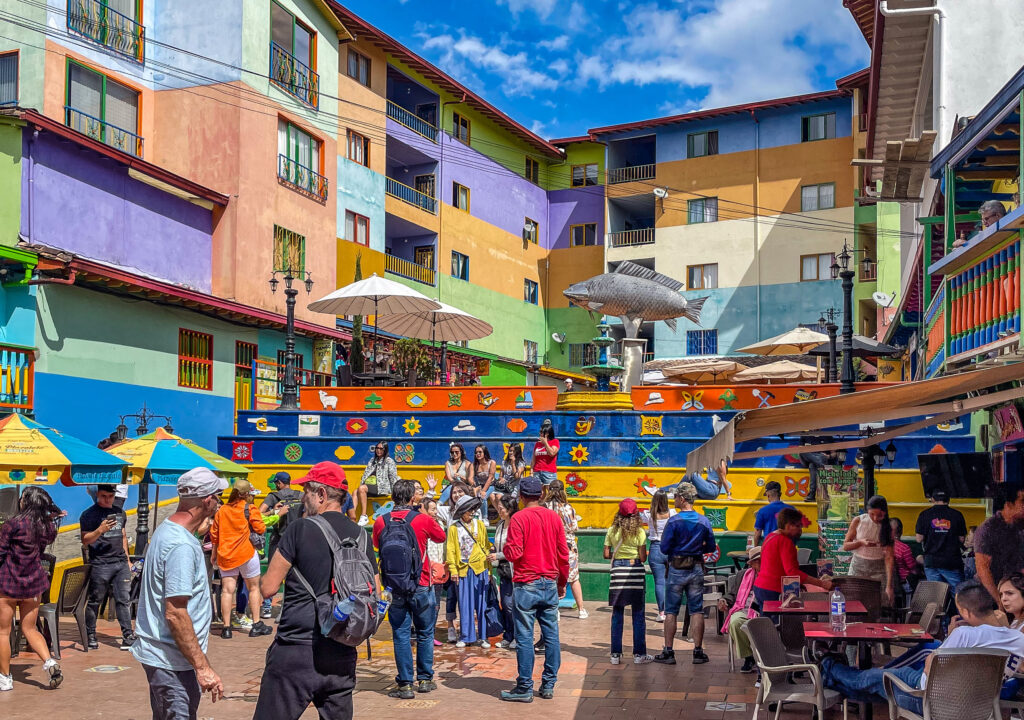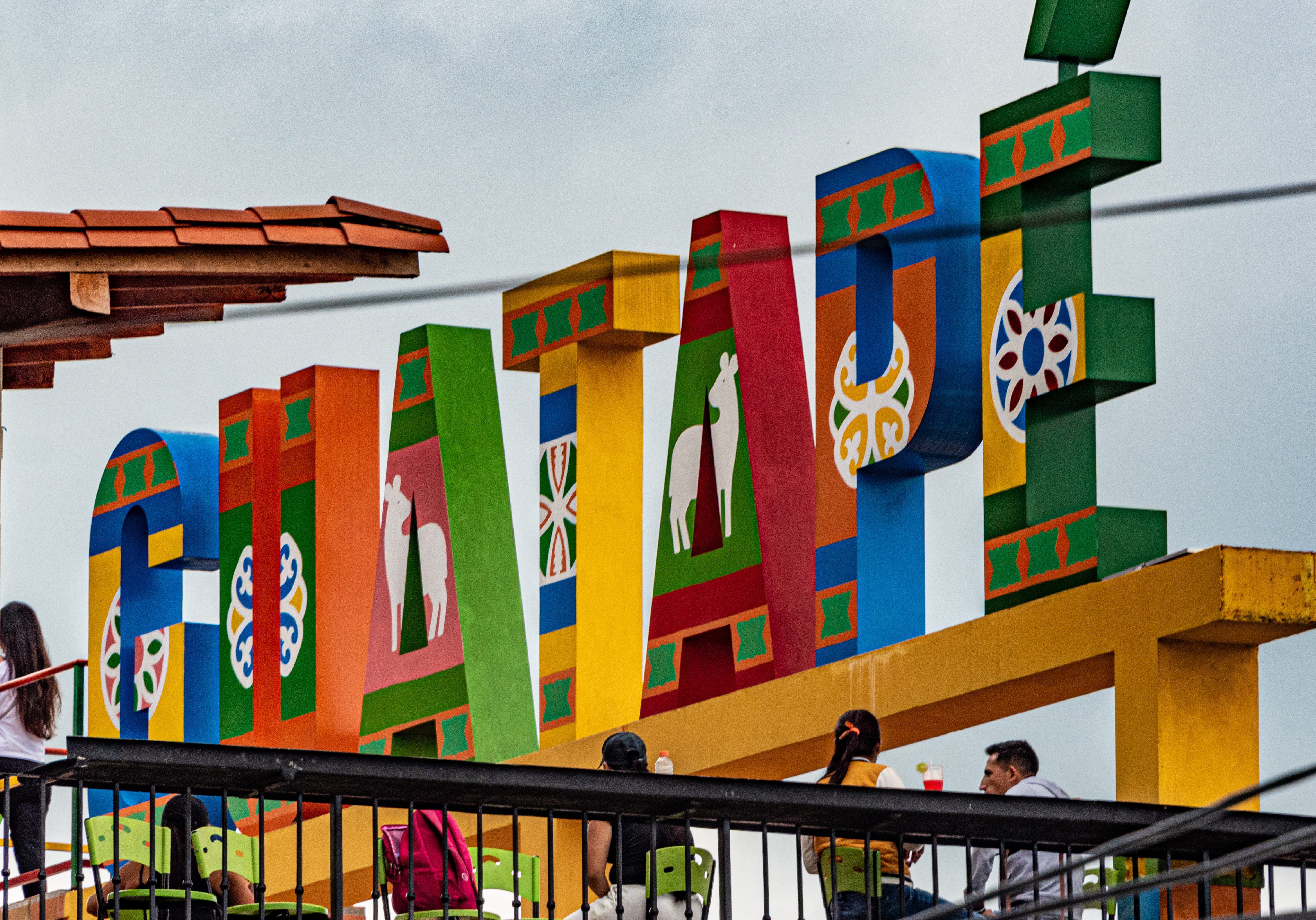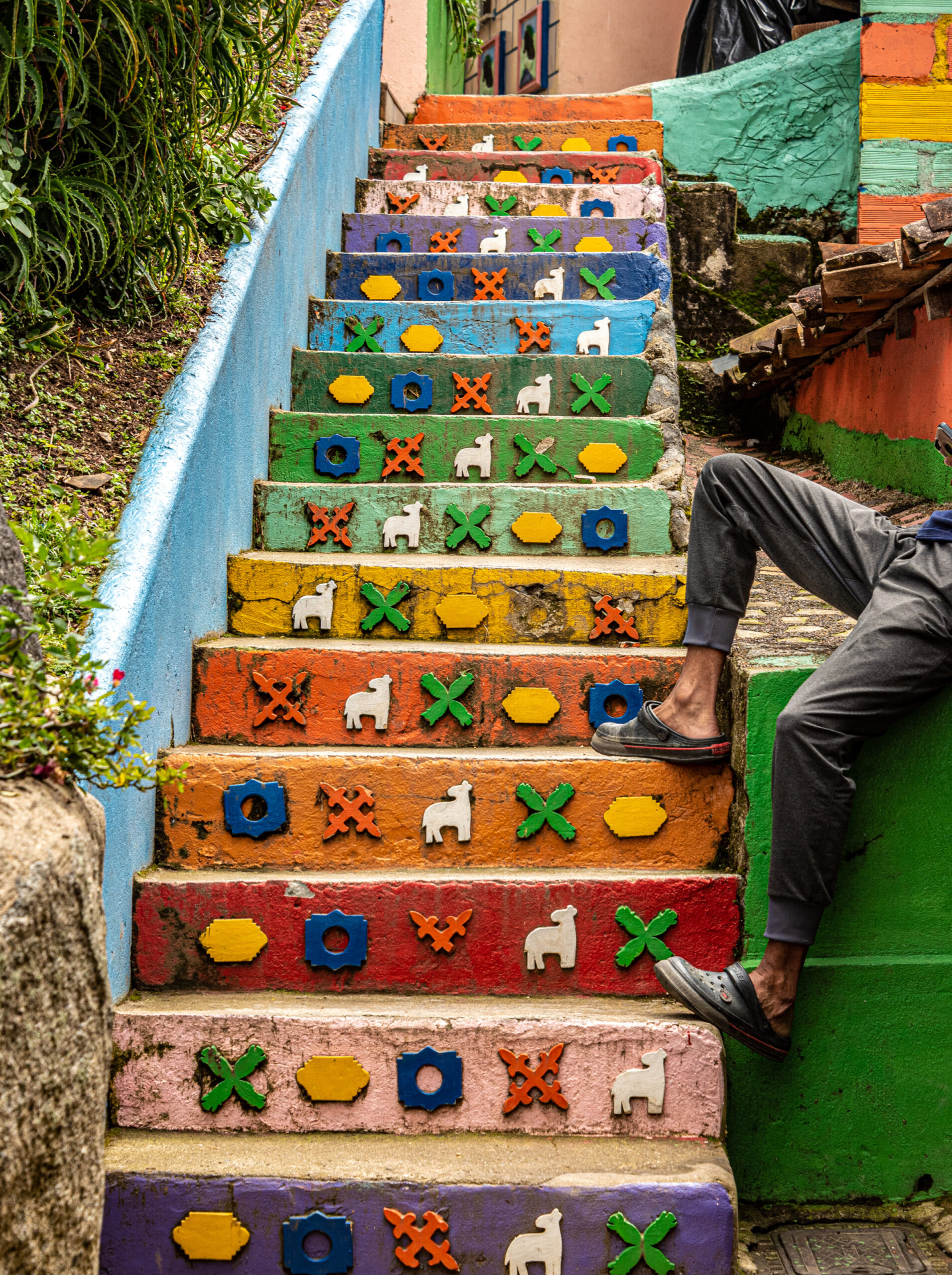With our guide Juan Carlos Vanegas, we drive about ninety minutes east of Medellín, Colombia, to a pair of unique tourist attractions. Dazzling Guatapé is the most colorful town I’ve seen in all my travel experiences. Nearby stands a mammoth rock, known as El Peñol de Guatapé, providing a grand climbing opportunity for the adventurous (read more about that here).
Originally a farming town, Guatapé’s future changed forever with the construction of a hydroelectric dam in the 1970s that catapulted the town’s importance as the chief electric production center in the country. The dam created an endless network of interconnecting lakes, with hotels, exclusive homes, marinas and other recreational facilities. At the same time, it secured Guatapé’s prominence as a tourist destination.
Individual houses and public buildings reflect the owners’ color preferences, each with different ‘zocalo’ panels at the bottom of front walls.


‘Plazoleta de Zócalos’ is a main gathering place for tourists and performers.
The cultural practice of creating a painted panel of plaster icons on the bottom of house fronts inspired the town’s technicolor veneer several decades ago. Called zócalos, the striking, often whimsical panels depict aspects of town life––farming, the owner’s business (bakery or carpentry, for instance), a teacher with her school class, and symbols of people’s personal beliefs. As the zócalos atttacted attention, townspeople began to embellish houses and public buildings with saturated paint colors and murals, luring even more visitors and establishing a national reputation as Colombia’s most colorful pueblo (village).
Pictured below: Zócalo panels depict the town’s history, commerce, and daily life.
Our guide Juan Carlos Venegas explains the history of Guatapé as we stand in front of this traditional fountain at the bottom of Calle del Recuerdo (Memory Street). Turn up the volume.

If You Go
-
Getting There—Non-Stop Flights from the U.S. to Medellín:
-
10 daily from Miami
-
1 daily from New York City, Orlando, Atlanta, and Los Angeles
-
-
Getting Around:
-
Hire a guide to take you or join a small tour group for half-day trips to visit both sites.
-
By bus: take a taxi, metro, or Uber to Terminal Norte (Medellín’s North Terminal) for the Guatapé ticket booth. Buses leave about every hour, seven days a week for the two-hour ride. At this writing, about $4.00 gets you there. You can get off first at El Peñol and then take the next bus into town. Check in Guatapé for the time of the last bus returning to Medellín. Or stay overnight in a local hotel.
-
By taxi: about $68 one-way.
-
- Travel Agent:
- I used Aracanto Tour Specialists for our full Colombia trip. Felipe and Margoth Rico will help you plan your visit to Medellín, provide you with an excellent guide (ask for Juan Carlos Venegas), as well as plan your stay elsewhere in Colombia.



